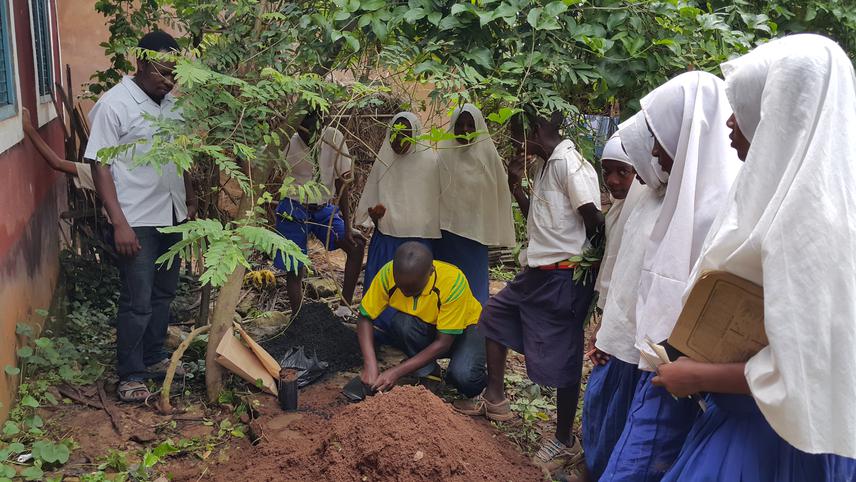Elihuruma Wilson
Other projects
28 Feb 2014
Phytochemical Investigations and Antimicrobial Activities of Extracts and Secondary Metabolites from Sterculia quinqueloba (Garcke) K. Schum
This project is aimed to promote the restoration of Chimpanzee corridor and park buffer zone of the areas bordering the park mostly to the north and north eastern of the park boundary through tree planting campaign and conservation education to schools and communities.

Training Session for Tree Nursery Preparation.
Gombe National Park has a small area to support viable in-situ population of Chimpanzee in the long run. Therefore it is important that wildlife particularly Chimpanzee from Gombe should have access to important habitats and interact with available wildlife population outside the Gombe National Park. But these habitats are increasingly become disconnected from Gombe due to increased human activities in the corridors. Therefore enhancing ecosystem connectivity between Gombe and these habitats particularly the nearby natural forest (Zashe forest) where Chimpanzee lives is inevitable. As such, different activities like planting of tree species of the same ecosystem in the corridor and Gombe buffer zones will have positive impact to the entire Greater Gombe Ecosystem health. Additionally, the regeneration of the already degraded habitats for wildlife outside the Gombe National Park will be promoted. Also, in the process of addressing the connectivity problem through tree planting campaign, other beneficial outcomes might be realized, which are like, improved chimpanzee and human health (through planting of medicinal plants), reduced vulnerability of the community to climate change problems (like soil erosion problem) and improved community based tourism.
The fact that, most of the tree species used by Chimpanzee as food supplement are also used as medicinal plants to human, then this project will use this opportunity to promote this dual benefit by planting the identified trees with those values to the community land and hence improving the healthy integration between human activities and sustainability of chimpanzee habitat outside the park. The integration process will go hand in hand with the improved conservation education practices which creatively connects between knowledge, attitude and practice for the purposes of gaining public support in conservation issues of the same. This education is expected to develop/create agents for change who will be able to promote conservation activities in the community and promote sustainable utilization of forest resources in the area. Additionally, Village Land Use Management Committee will be capacitated through training on conservation issues and participated into tree planting practices for the purpose of ensuring sustainability.
Similarly, the reduced habitats for wildlife particularly chimpanzee outside the park will be explored again and made known well to the village authority for regeneration process to be initiated and promoted slowly, for the benefits of Chimpanzee conservation and sustainable community development.